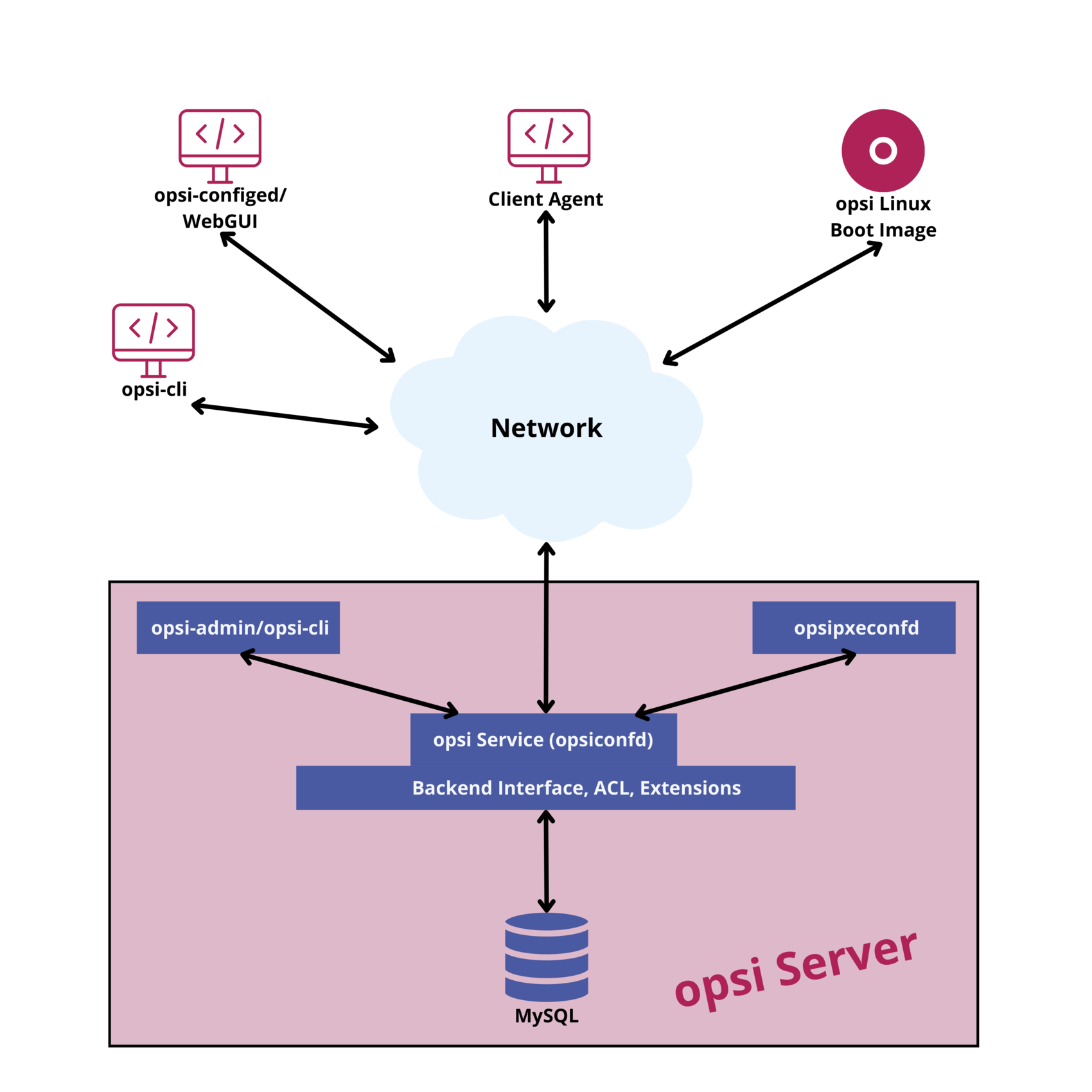opsi Overview
In complex environments with numerous computers, tools for automatic software distribution and operating system installation become vital. They standardize processes, simplify maintenance in large-scale setups, and consequently, save on costs and time. Unlike many such tools that come with large licensing fees, opsi stands out with its open source license.
| With opsi, your expenses are tied only to the services you specifically opt for, like consulting, training, and maintenance, or if you choose to use any optional paid modules. |
Even though our software and manuals are available free of charge, implementing a software distribution tool is still an investment. To mitigate risks of delays, prolonged training, or extended learning phases, uib GmbH in Mainz provides a range of comprehensive services around opsi, including training, support, and consultancy.
Origin
Originating in the mid-1990s, opsi was already managing about 2000 Windows computers across different sites for a state administration. Now, the client management system is effectively utilized in numerous small and medium-sized heterogeneous environments. It manages Windows, Linux, and macOS clients, ranging from a dozen to several thousand computers.
| For an overview of registered opsi installations, visit the opsi map. |
Features
The main features of opsi include:
-
Automated software distribution
-
Automated operating system installation
-
Comprehensive hardware and software inventory
-
User-friendly management through a dedicated interface
-
Support for distributed environments with multiple depot servers
Furthermore, there are various opsi Extensions available, including modules for license management, integration with directory services, Secure Boot/UEFI support, a Linux client, and a macOS client.
Structure
The opsi server stores all data in a database backend (MySQL/MariaDB).
| Please note that the file-based backend has been discontinued from opsi 4.3 onwards. As of opsi 4.3, only the database backend is supported. |
Communication between opsi components and the opsi server is facilitated through a web service. This service, named opsiconfd, transfers data to the backend manager, which then commits this data to the backend.
